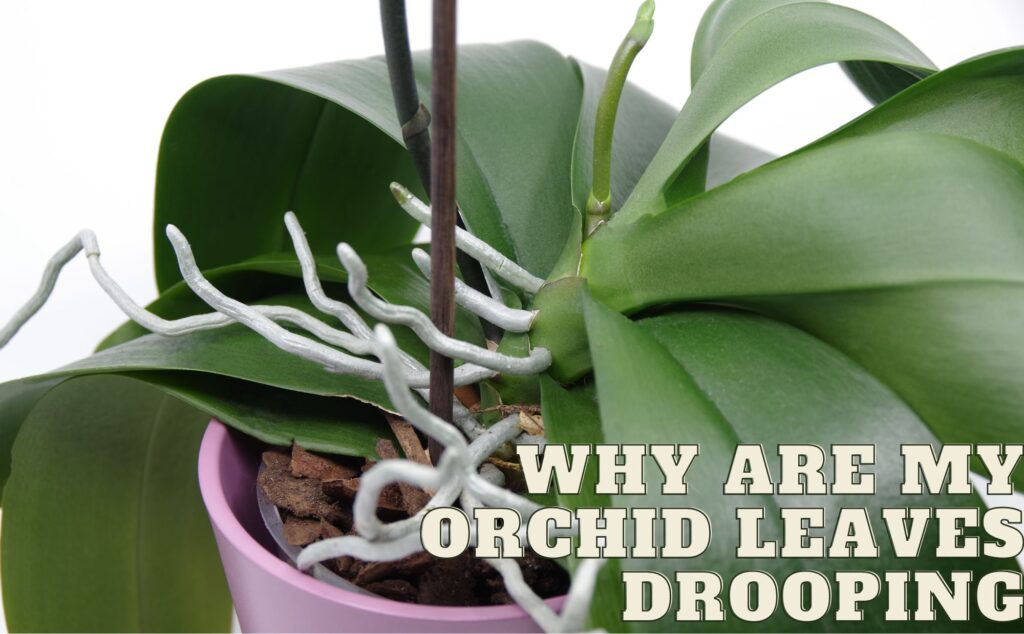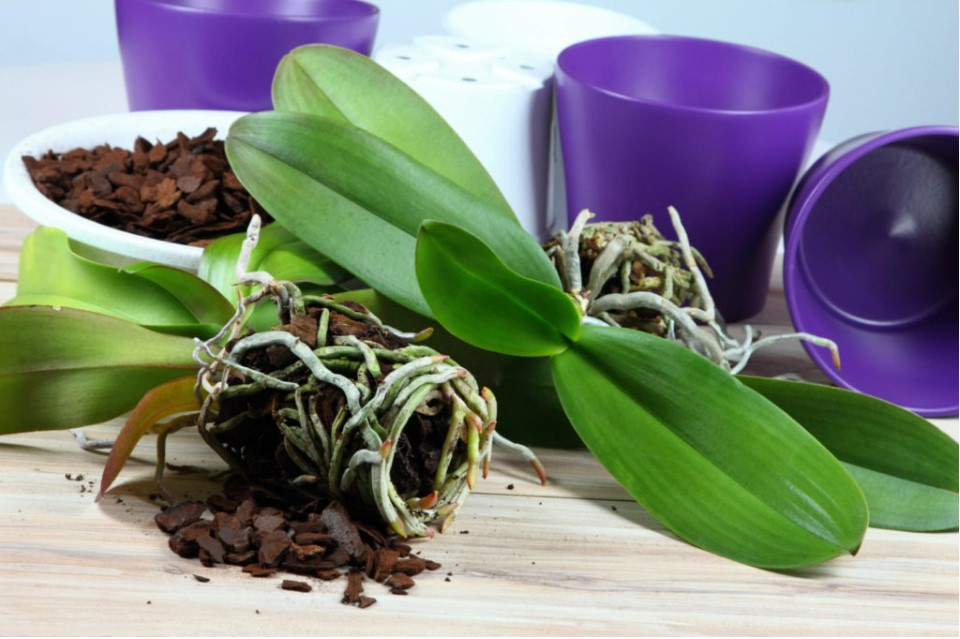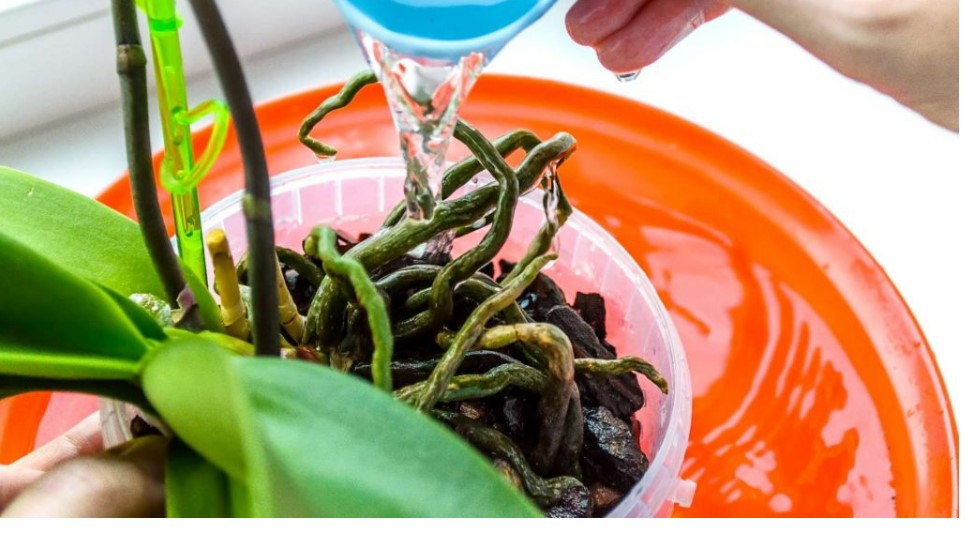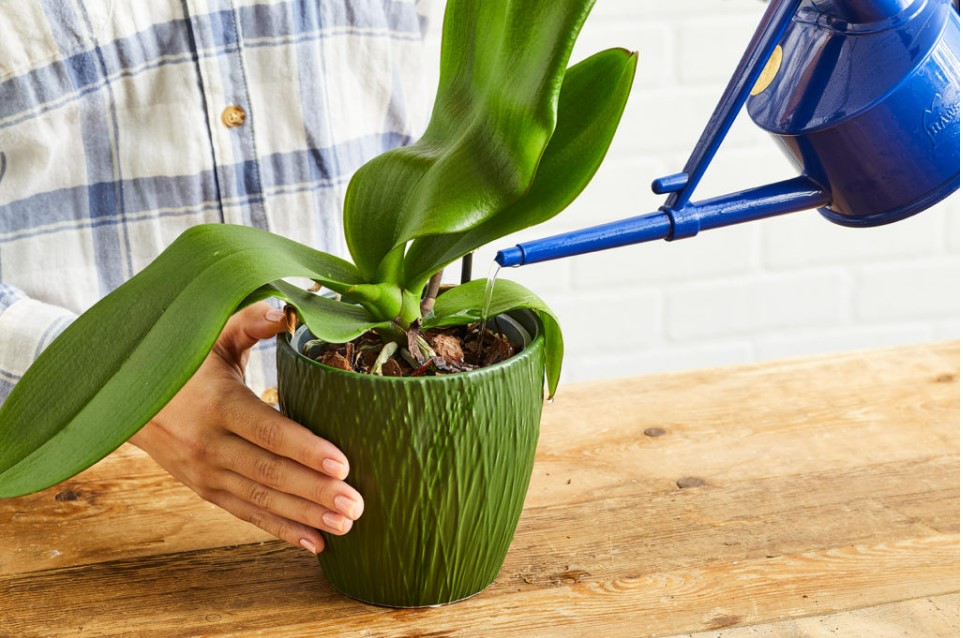
Why are my orchid leaves drooping
Reason 1: drought
Now let’s figure out what aspects of the life of an orchid make you ask why are my orchid leaves drooping.
If you notice that the earth in the pot is dry, and the lower leaves have drooped and turned yellow – this is a clear sign that it is a dehydrated orchid. Use clean water at room temperature and keep your plant hydrated.
If your plants are under-watered, simply water your orchid more frequently. Check the potting media regularly to determine if the potting medium had dried out.
Leaves dropping from a plant can indicate a few different things, depending on the type of plant and the specific circumstances. Here are some possible reasons why leaves may be dropping:
- Natural Leaf Drop: It’s normal for plants to shed some of their older leaves as they grow new ones. This is often a natural part of the plant’s life cycle, and isn’t necessarily a cause for concern.
- Overwatering or Underwatering: Plants that are overwatered or underwatered may begin to drop leaves. Overwatering can lead to root rot and other issues that can cause leaves to wilt and drop off. Underwatering can also cause leaves to wilt and drop off, as the plant tries to conserve water.
- Environmental Stress: Plants can be sensitive to changes in their environment, and may drop leaves in response to stressors like temperature changes, humidity fluctuations, or exposure to harsh chemicals or pollutants.
- Pest or Disease Problems: Plants that are infected with pests or diseases may begin to drop leaves. Common examples include spider mites, mealybugs, and fungal infections.
If you’re unsure why your plant’s leaves are dropping, it’s a good idea to research the specific type of plant and its care requirements to see if there are any common issues that may be causing the problem. It’s also a good idea to check the plant’s roots and soil to make sure it’s not being overwatered or underwatered. If you’re still unsure or if the problem seems to be getting worse, you may want to consult a plant expert or a local garden center for advice.
Advice: to make it easier for you to manage to water, choose one day of the week and water your orchid plants weekly, sticking to your watering schedule!
If you forget to water your plant and think that putting ice cubes in the pot is a great solution, then you are wrong! This will kill orchid roots, so use only room temperature water.

Consequences
Let’s see what consequences improper and irregular watering can lead to:
- Yellowed leaves. This happens because the orchid stem draws water from the tips of the leaves to survive.
- Leaves turn brown in the form of veins or spots. Wrinkled orchid leaves might never recover.
- Dry parts of the plant, and leaf tips.
- Droopy orchid leaves.
Reason 2: overwatering
Orchids’ healthy roots and their health mean a lot to the plant. If you notice droopy leaves on your orchid, but you water it regularly, it might be a sign of an overwatered orchid. Excessive watering of the plant threatens root rot, infection with fungal diseases, and death of the plant. So, always make sure that you not over watering your orchid!
First, let’s make sure that the problem with your plant is improper watering. Look closely at your orchid and touch the leaves. If you see that the leaves have lost their luster, are curled to the sides and hang down along, and are soft to the touch, not elastic, then this is a sure sign of abundant watering.
Reason 3: transplanting
Now let’s help your orchid and transplant it to a new place where it can have a fresh start.

Make sure to separate the ill plant from other orchids. For transplanting, you will need:
- Very carefully remove the plant from the old pot. Make an effort not to destroy the orchid plant, as root rot will make the plant very vulnerable at the base.
- Rinse the root ball with warm water and remove the old soil. If you feel an unpleasant putrid smell coming from the root system, then rejoice, you are helping the plant in time. Drain out excess water.
- If you notice all the rotting orchid roots, cut them off with clean garden shears. If a plant develops crown rot, it is doomed to death. The new root system will recover soon, and you can throw away dead roots with food waste.
- Prepare a new pot of potting mix or orchid substrate in advance and place the trimmed orchid in it.
- Water your orchid and place it in a shady spot. From this moment, your plant will get well. Will droopy orchid leaves recover? Yes, give it some time.
Reason 4: avoiding
Now let’s decide what to do to avoid drooping orchid leaves in the future.

Read also: Healthy orchid roots
If you are not sure whether to water your orchid or if you forgot when it was last watered, feel the soil with your finger. Orchid growers recommend checking soil moisture by sticking your finger 2 inches into the orchid pot.
Reason 5: temperature
Not only wrong watering can harm your orchid, but also the wrong temperature.

Heat stress can cause orchid leaves to droop. When there is too much heat around, the leaves of the plant lose a lot of water due to transpiration.
Remember that the orchid is a fragile plant and is categorized as a houseplant, not an outdoor plant. Therefore, do not take the orchid outside, as the sun’s rays or cold wind can harm it.
To determine if an orchid is experiencing heatstroke, pay attention to the condition of its leaves. If you see leaf burn, brown roots, brown root tips, or premature dropping of buds and flowers means your orchid experiencing heat stress.
Reason 6: сare
If you notice signs of unhealthy plants, take these measures:
- Move the plant to a semi-dark place in the house, install a humidifier next to it, or spray it from a spray bottle with water at room temperature.
- Make sure there is no draft in the orchid room.
- If you notice leaves in poor condition, you can trim them with clean garden shears. Affected leaves are unlikely to recover on their own, so help the plant with pruning.
- You can transplant the plant into a new pot, thereby airing the orchid’s roots. Pay attention to the plant’s soil and inspect the roots. If you noticed something you don’t like about the roots of a plant, cut them off and change the potting mix.
To be sure of the well-being of your orchid, always monitor the temperature of the room in which the plant is located. Always check how your plants are doing outside or inside your house, especially during times of sudden environmental changes.

Reason 7: humidity
Air humidity is an important aspect of the normal life of an orchid. Therefore, if you live in a dry climate or have central heating at home, pay special attention to the condition of the air in your apartment.
Signs of dry air in your orchid may be wrinkled leaves or drooping leaves, limp orchid leaves, or your orchid’s leaves are dry, yellow, or brown.
Help
To help the plant cope with dry air, place a humidifier next to it or spray it with a spray bottle.
Always make sure the water in the bottle is at room temperature. Don’t forget to keep the aerial roots moist as well.
Remember to wet sphagnum moss with water and fill the moss pole with water, if you have them. They will also help your dehydrated orchids and drooping leaves find their moisture.
Reason 8: air
To keep your orchid healthy, it needs good indoor fresh air circulation.
Here are a couple of ways to do it:
- Take your plant outside when the weather is nice. Make sure that direct sunlight does not fall on the orchid.
- Open the window to the room more often and let fresh air into the room. Beware of cold drafts, they can harm the plant.
- Use an exhaust fan to circulate stale air around your home.
Reason 9: fertilizing
If drooping orchid leaves are combined with necrosis or yellowing, your plant may be suffering from a nutrient deficiency.
Identifying a nutritional deficiency can be challenging if you are not an expert in learning about its symptoms.
If you find that your plant сare is correct, but the plant continues to look unhealthy, try using a fertilizer. Calcium, sulfur, and magnesium are also among the micronutrients that orchids need the most.
Choose a quality fertilizer that is diluted in water or ready-made liquid. Fertilize the orchid once a month, in spring and summer, when the plant is most active. Remember, you can not fertilize a dormant plant in winter when it is sleeping! This can scorch the orchid and kill the plant.

Read also: Orchid leaves wrinkled and limp
Conclusion
Now you know more about caring for your plant! Let’s remember the main points of the article to avoid any droopy orchid or rotted roots:
Healthy roots mean a lot for the full life of the plant. Water your orchid regularly and properly, keep an eye on the potting mix in the pot and trim the rotten roots. For easier observation of the roots, you can purchase a clear plastic pot and then see any dead root tips. When the plant grows out of the previous pot, transplant the orchid into a larger pot to stimulate root growth.
Keep the indoor air sufficiently humid, water, and fertilize it.
You can also try the method of cold tea soak watering to give it some boost. Soak normal black tea in water and dissolve it into a light tea. Cool the solution to room temperature and use it as ordinary water for irrigation.
If the orchid leaves are bright green or dark green, if you see that the leaves are glossy green and elastic to the touch, you can be sure that your orchid is a healthy orchid!
Read also:
How do you fix sagging orchid leaves?
To fix sagging orchid leaves, improve the plant’s growing conditions by providing proper light, humidity, water, and fertilizer. Repotting the orchid in a well-draining potting mix may also help support the leaves.
Can limp orchid leaves recover?
Yes, limp orchid leaves can recover if the underlying cause is addressed, such as improving growing conditions with proper light, humidity, water, and fertilizer. In some cases, the plant may need repotting in a well-draining potting mix.
Why are the leaves on my orchid limp?
Orchid leaves may become limp due to a lack of proper care, such as insufficient light, low humidity, over watering, or under watering. The plant may also be root-bound or in need of repotting in a well-draining potting mix.
What do overwatered orchids look like?
Overwatered orchids typically have yellow or brown leaves, mushy or rotting roots, and stunted growth. The leaves may also be limp and the potting mix may have a foul odor.
